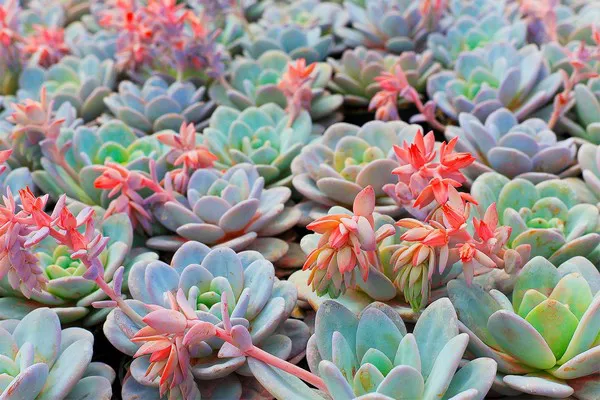Succulent plants have gained popularity for their unique and captivating appearance. One of the defining features of succulents is their fleshy and often thickened leaves, which contribute to their ability to store water. Understanding the anatomy of succulent leaves can provide valuable insights into how these plants adapt and thrive in arid environments. In this article, we will explore the structure and function of succulent leaves, shedding light on the specialized adaptations that make them so remarkable.
1. Leaf Morphology
The leaves of succulent plants exhibit distinct morphological characteristics that set them apart from other plant species. Succulent leaves are typically thick and fleshy, often containing water-storing tissues. These leaves can vary in shape, ranging from cylindrical or needle-like to flattened or paddle-shaped. Their diverse forms allow succulents to maximize water absorption, minimize water loss through transpiration, and adapt to various climatic conditions.
2. Water Storage
One of the primary functions of succulent leaves is water storage. The fleshy tissues within the leaves act as reservoirs, allowing succulents to store water for extended periods. The thickened leaves have specialized cells and tissues, such as parenchyma cells, which can store large volumes of water. These adaptations enable succulents to survive in arid regions with infrequent rainfall by utilizing stored water during periods of drought.
3. Reduced Leaf Surface Area
To minimize water loss through transpiration, succulent leaves often have a reduced surface area. This reduction is achieved through various mechanisms, such as the presence of fewer stomata or modified leaf shapes. Stomata are tiny openings on the leaf surface that regulate gas exchange and water loss. In succulents, the stomata are typically located in sunken pits or covered by trichomes (hairs), which helps reduce evaporation and protect the plant from excessive water loss.
4. CAM Photosynthesis
Crassulacean acid metabolism (CAM) photosynthesis is a specialized adaptation found in many succulent plants. Unlike most plants that perform photosynthesis during the day, CAM plants, including many succulents, carry out photosynthesis at night. During the nighttime, they open their stomata to absorb carbon dioxide, which is converted into organic acids and stored in the leaves. During the day, when the stomata are closed to conserve water, the stored acids are broken down, releasing carbon dioxide for photosynthesis. CAM photosynthesis allows succulents to minimize water loss by exchanging gases at night when temperatures are lower and humidity is higher.
5. Sunlight Protection
Succulent leaves often have additional adaptations to protect them from excessive sunlight and potential damage. Some succulents have a waxy coating, known as a cuticle, on their leaves, which helps reduce water loss and provides a protective barrier against intense sunlight. Others have specialized pigments, such as anthocyanins, that give their leaves a reddish or purplish hue. These pigments act as natural sunscreens, absorbing and dissipating excess light energy to protect the plant tissues from potential damage caused by high levels of sunlight.
6. Leaf Propagation
Succulent leaves have an extraordinary ability to propagate and produce new plants. Many succulents can propagate through leaf cuttings, where a leaf is carefully removed from the parent plant and allowed to root and develop into a new individual. This process is possible due to the presence of specialized cells in the leaf, called meristematic cells, which have the capacity to differentiate into various tissues and organs. By harnessing the regenerative potential of their leaves, succulents can reproduce and expand their populationseven under challenging conditions.
7. Leaf Adaptations in Different Succulent Families
It’s important to note that while succulents share common traits, there are variations in leaf adaptations across different succulent families. For example, cacti are a type of succulent that have modified their leaves into spines. These spines serve multiple purposes, including reducing water loss, providing shade, and deterring herbivores. Other succulent families, such as the Crassulaceae family (which includes popular succulents like Echeveria and Sedum), have evolved thick, fleshy leaves with specialized water-storing tissues.
Conclusion
Succulent leaves are marvels of adaptation, embodying a range of specialized features that enable these plants to thrive in arid environments. Their fleshy nature, water storage capabilities, reduced surface area, and adaptations like CAM photosynthesis and sunlight protection contribute to their remarkable ability to withstand drought and conserve water. Additionally, succulent leaves play a vital role in propagating new plants through leaf cuttings, showcasing their regenerative potential. By understanding the anatomy of succulent leaves, we gain a deeper appreciation for the intricate mechanisms that allow these plants to survive and thrive in their natural habitats.


